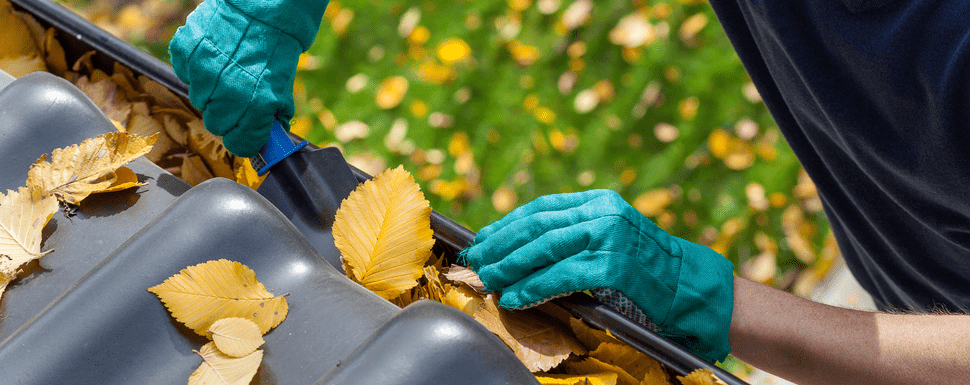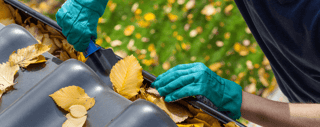Your fall home maintenance checklist
7 action-oriented categories packed with the best in fall-prep steps

Fall home maintenance checklist – key tips to remember:
- Getting ready for colder weather means taking action now
- Investing a little time on fall home maintenance now will pay off in the spring
- You might be surprised how easy it is to do most of this stuff yourself
- If you’re not inclined to DIY, you can always call a pro for help
- Cleaning the gutters might not sound fun now, but it sure beats an ice dam later
How do you prepare your house for fall weather? Let us count the ways. First of all, there’s no definitive list. Everybody claims to have one, and good on them for trying, but how you approach fall maintenance preparation at your home will likely differ from your neighbor’s routine. Still, there are standards you’ll want to keep in mind. Why is fall home maintenance important? It’s important because your home is likely to be your biggest investment, and your comfort and security are worth the effort. Fall maintenance is a broad topic; everyone has priorities, and we won’t have enough space to cover it all in this post. However, as you assemble your seasonal home maintenance checklist to use year-round, we’ve gathered some advisable — even essential — fall home maintenance tips to help get you started on your list for this autumn.
1. Foundation: Fill cracks and gaps, and manage drainage
Walk along the outside perimeter of your home with some caulk. Look carefully at the foundation and fill in any cracks you find. Check around masonry, siding, windows and doors to fill in gaps and eliminate drafts. Heating and cooling account for nearly half of your home’s utility expenses, so you want to aim for optimal efficiency. This means keeping your home well-sealed. Make sure window wells are clean and drainage is effective. Also, make sure the ground around your foundation slopes away from it and doesn’t allow pools of water to accumulate against the home.
2. Roofing: Inspect your roof in person or via binoculars, drones or professionals
If you can safely manage to access your roof and inspect it yourself (never when you’re home alone, in case you need help in an emergency), clear any leaves, sticks and twigs. Look for potential problem areas like loose boots around plumbing vents, broken shingles, rusted flashing pieces, or growing moss or lichen. If getting onto your roof yourself is unsafe or impractical, look at it closely from the ground with binoculars (if you can find all the viewing angles) or use a drone (if you have one), and consider calling in a professional for an evaluation.
3. Gutters: Clean them out, free any obstructions and install guards
Not only can gutter guards save you plenty of work by keeping your gutters clean and free of obstruction, but they can also save you plenty of money by preventing ice dams, critter squatters and other headaches no one wants to deal with. However, if you’re still cleaning unguarded gutters, try using an old spatula as a cheap but effective way to scoop out the gunk. If your gutters bend down, bend them back up with the leverage derived from a pry bar and a large chain link. If the bottom of one of your downspouts is clogged, try using a plumber’s snake to free the accumulated debris. Make sure each downspout extends at least 5 feet away from your home for adequate drainage.
4. Furnaces and radiators: Change your filters often and have regular evaluations
Changing your furnace filters every few months is your No. 1 priority. Aside from changing the filter in the built-in humidifier (if your HVAC system has one) and keeping your ducts clean, your next best bet for keeping your heating and cooling system in tiptop shape is to have it evaluated once or twice a year by a professional. It’s best to do this in the milder months, like spring and fall, before temperatures hit their extremes in summer and winter, when reliance on your HVAC system is critical. If you have a radiator, check the air vents and clear any obstructions with a stiff wire or needle. Vent the air, vent the water valve, and have a cup on hand to catch any extra water. If your radiators are old and haven’t been serviced in a while, have them evaluated by a professional.
5. Fireplaces and chimneys: Do a close inspection and call a pro if you need one
During the day, inspect the interior of your fireplace, looking for missing bricks or mortar, or visible cracks in the firebox. Grab a headlamp or a powerful handheld flashlight and look inside your fireplace to ensure your damper opens and closes as it should. With the damper open, look up in the flue to check for obstructions like leaves, branches or birds’ nests. You should be able to spot daylight in the distance, at the top of the chimney. If not, you may need to call a professional chimney sweeper to clear obstructions and clean the chimney.
6. Mowers and lawns: Properly retire your mower for the season and think about leaves
After your last mow of the season, add a little fuel stabilizer and run the lawn mower until it uses up all its gas. Then, after allowing it to cool, take out the spark plug and pour a cap of engine oil into the hole. Pull the starter cord twice to distribute the oil, then replace the spark plug and clean out all the old grass underneath the deck. Consider aerating your lawn and watering it occasionally in the fall and winter to keep things healthy. If you’re in the habit of fertilizing once a season, continue to do so in the colder months. Experts disagree on the merits of raking leaves. While dead leaves can kill grass, they also make great compost and enrich the soil. Depending on your particular yard-and-garden setup and related goals, deciding what to do with fallen leaves is up to you. All these suggestions are worth putting on your fall yard maintenance checklist.
7. Grills and hoses: Put a little time into cleaning these essential tools before storing
Whether you use charcoal or gas, it all begins with a thorough cleaning and a cover to protect your grill from the elements. However, if you use gas, you have a few more steps to consider (after cleaning and before storing). After everything is dry, turn off the gas, disconnect the burner, remove the gas tubes from the gas lines, and remove the unit. Apply a thin coat of oil to all metal parts, including the burner, to prevent rust and discourage moisture. Store the burner in a sealed plastic bag, disconnect the tank, and cover and store everything outside. Tape over the gas-line input to keep insects away. When it comes to your garden hoses, remove them from all outdoor faucets, drain them thoroughly, and store them in a garage or shed to avoid ruining them (or the pipes they’re attached to) when temperatures drop.
More fall home maintenance
Getting ready for fall is one thing, but we’ve only begun to scratch the surface of the many tasks related to preparing your home for the winter. We could also discuss things like plumbing, snow preparation, smoke and carbon monoxide detectors, garage doors, filters and paint maintenance, windows, pools, driveways, ceiling fans, humidifiers, porch and deck maintenance, and more. Hopefully, this list gets you thinking preventively and proactively as seasons shift. As you work on your fall home maintenance checklist scheduling and consider your options, remember you can always call a home repair service.
The information in this article is intended to provide guidance on the proper maintenance and care of systems and appliances in the home. Not all of the topics mentioned are covered by our home warranty or maintenance plans. Please review your home warranty contract carefully to understand your coverage.
